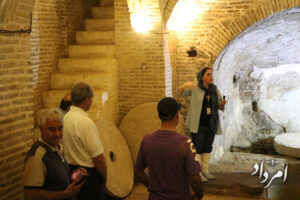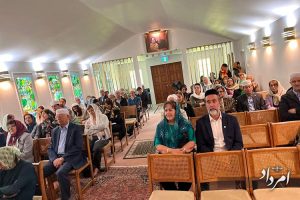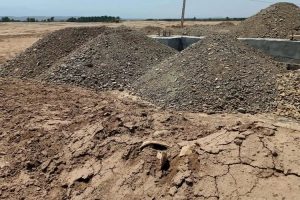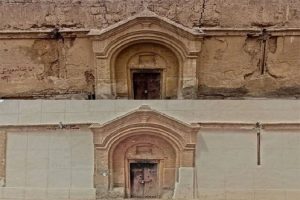By conducting a field survey of Qomi Abad Hill in Ray County, south of Tehran, archaeologists announced new findings that date the history of human habitation in the Tehran Plain back tens of thousands of years, and probably to more than 40,000 years ago and perhaps to nearly 80,000 years ago.
According to ISNA, this discovery by archaeologists was obtained in the village of Qomi Abad. Where one of its ancient hills has been destroyed with the permission of the General Directorate of Cultural Heritage of Tehran Province, and the news has motivated several archaeologists to visit the field. Although there are no traces left of that hill, which has no specific name, and the General Department of Cultural Heritage of Tehran Province has also denied its historical status, archaeologists have made new findings by examining the site and the remaining hill, they say will change the history of Tehran.
Morteza Hesari, a member of the scientific staff of the Research Institute of Cultural Heritage and Tourism, who visited the village of Qomi Abad, has now announced new finds belonging to the Paleolithic era in the south of Tehran.
About these findings he explained: During last week’s visit to the main hill of Qomiabad, which is located in the south of Qomiabad village in Ray city, we observed stone tools from the Paleolithic period, so we requested Fereydoun Biglari, an archaeologist and the Head of the paleolithic department of the National Museum of Iran to have a field visit to the site.
This archaeologist continued: In this visit, the findings obtained were approved by this stone expert, which marked a great event in the history of Tehran province.
According to what was reported by the Public Relations Department of the General Directorate of Cultural Heritage of Tehran Province, Fereydoun Bigleri, head of the Paleolithic Department of the National Museum of Iran, who also visited the village of Qomiabad and the surviving ancient hill, said: Previously we had very little information about the paleolithic period in Tehran province, which was limited to scattered findings from that period. In the natural hills of Qomi Abad, we are now facing vast distribution of stone artifacts.
The director of the Paleolithic Department of the National Museum of Iran said: In a recent visit, we saw samples of mother stone, mother stone products, and other parts related to cutting and producing stone tools on the surface of Qomi Abad hills.
He added: “The surface of these hills is made of sediment with fragments of flint, igneous and other cuttable stones, and which was a place for stone cutting and making stone tools in the Middle Paleolithic era.”
Biglari stated: According to these new findings, the history of human habitation in Tehran goes back tens of thousands of years and reaches more than 40 thousand years ago and maybe even nearly 80 thousand years ago. Bone remains of humans from this period found in several caves show that Neanderthals lived in parts of Iran during the Middle Paleolithic period. Of course, to gain more knowledge, we need to do more research in this place.










